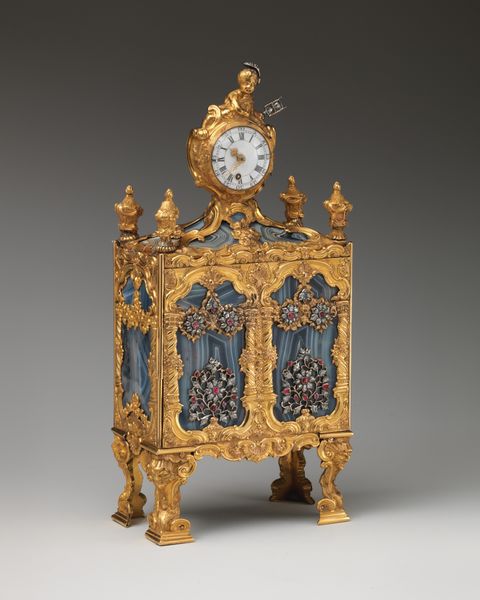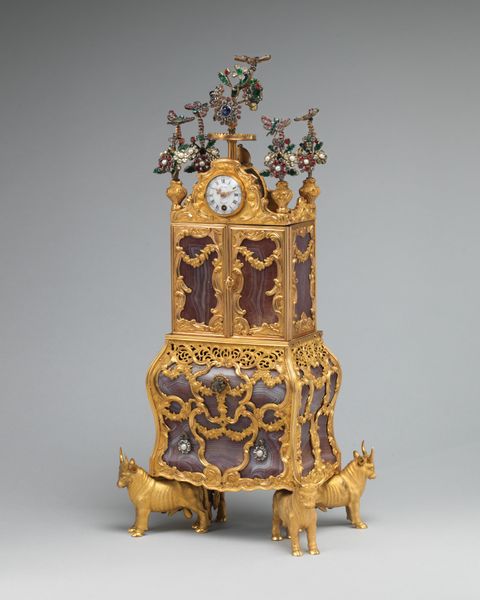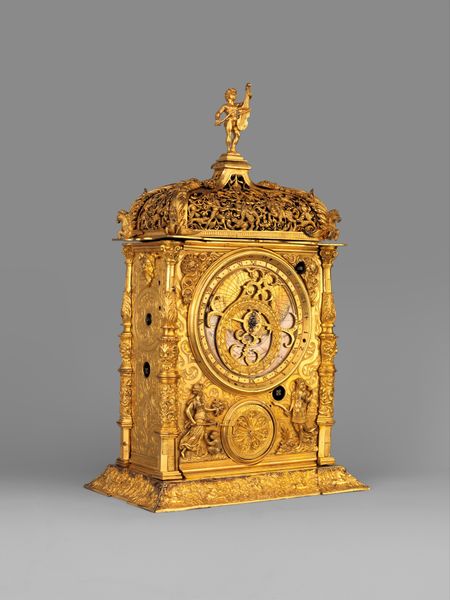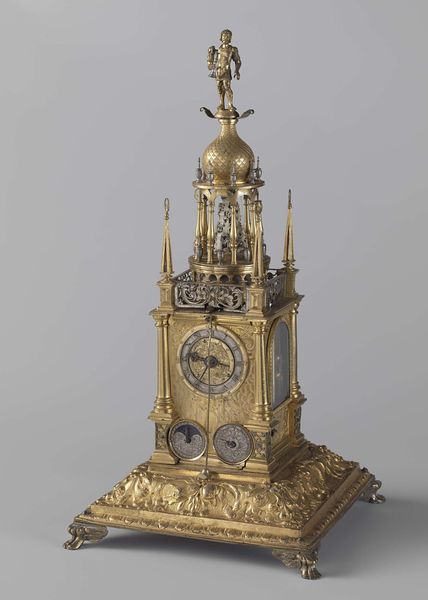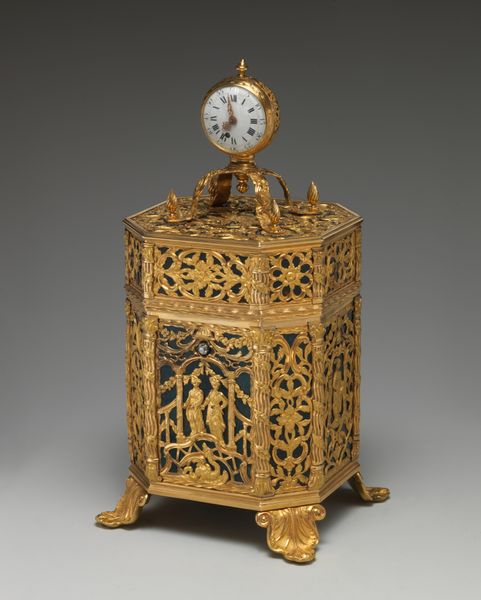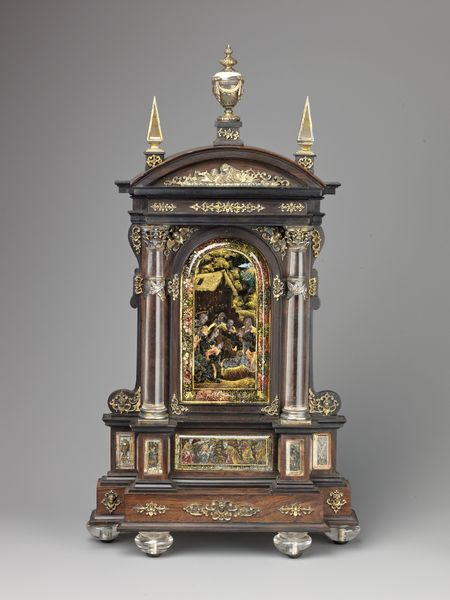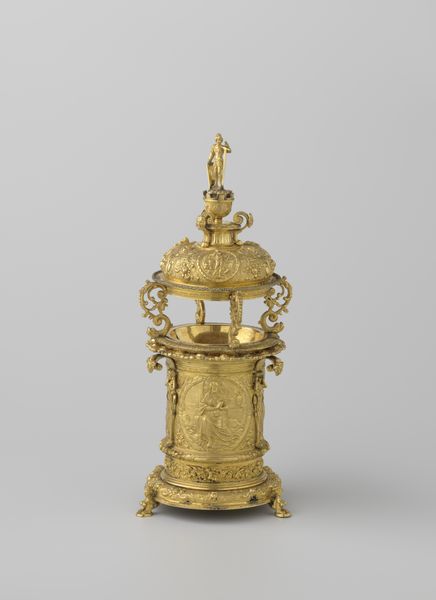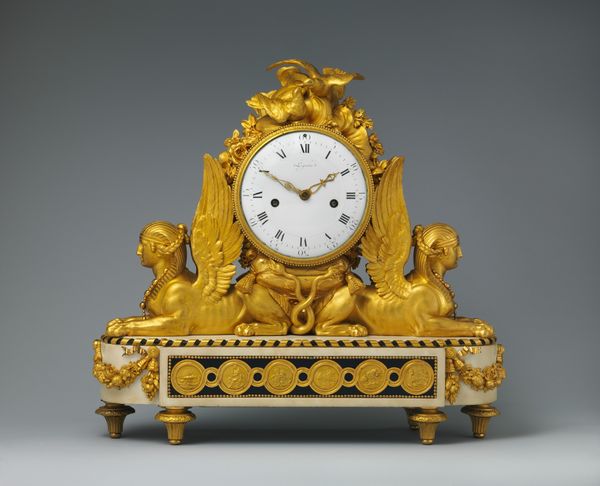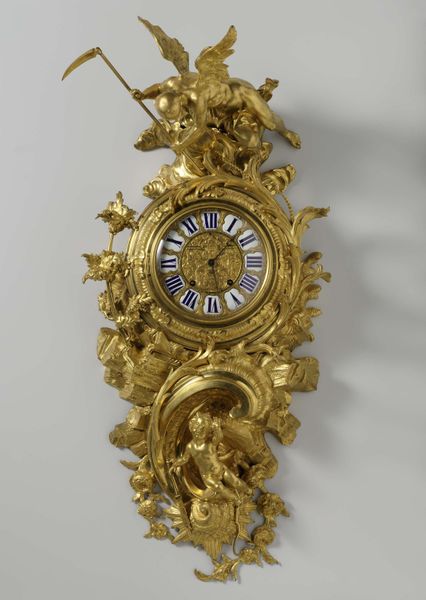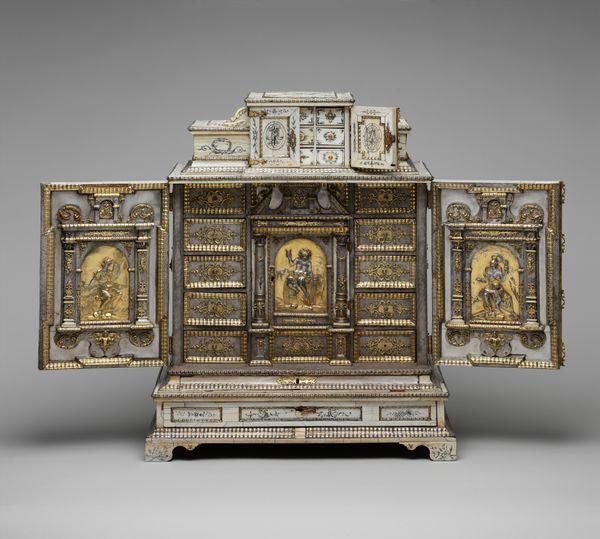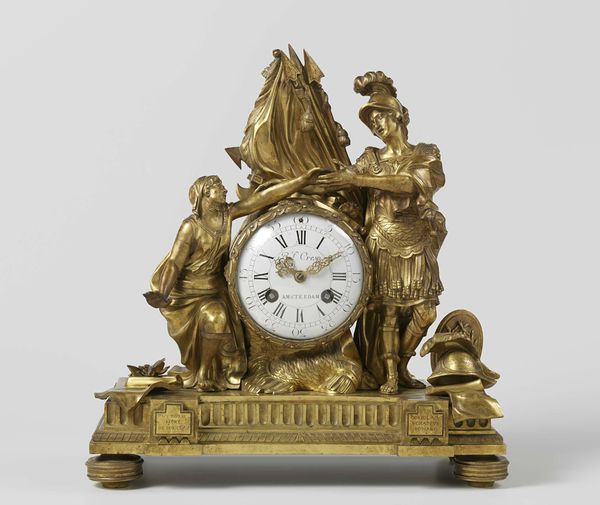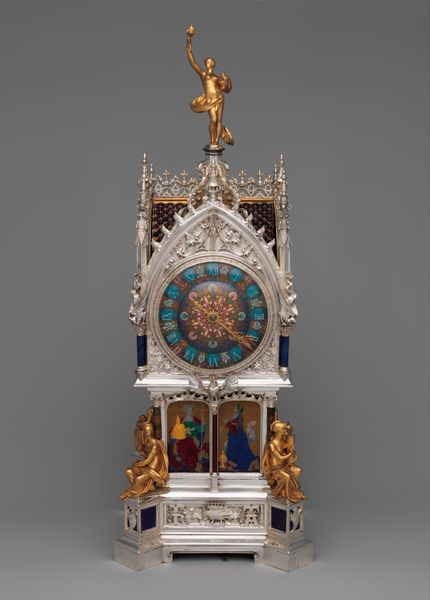
Dimensions: Overall: 10 5/8 × 5 1/2 × 3 1/2 in. (27 × 14 × 8.9 cm)
Copyright: Public Domain
Curator: I'm immediately struck by the opulence, the sheer gleam of this gilded sculpture. It radiates a sense of profound peace, almost meditative. Editor: Indeed. What we’re viewing is "Pax," crafted in 1873 by the workshop of Franchi and Son. Housed here at the Metropolitan Museum of Art, this piece presents us with a fascinating convergence of artistry and historical context, specifically its embodiment of religious power structures in post-Risorgimento Italy. Curator: Power is the key term here! Looking closely, the imagery depicts the laying of Christ’s body in the tomb. This iconography speaks volumes, resonating with cycles of death, mourning, and hope present across cultural narratives. I wonder how contemporary audiences interpret the cross rendered so central here. Editor: Its central placement is undeniably assertive. During that era in Italy, the church wielded significant social and political power. So depicting this crucial moment in the Gospels on such an extravagant object sends quite the pointed message. Furthermore, the materiality speaks volumes – gilded metal intended to display honor and respect. Curator: The artists certainly deployed familiar tropes here—Christ front and center, figures kneeling and revering in humility, which aligns to patriarchal and hierarchical organization. Is this then art intended to intimidate as much as inspire? Editor: I think it's both. And to be clear: we can read familiar tropes as intentionally conservative gestures intended to reiterate particular views of the world as inherently ordered and stable, regardless of whatever social unrest happens outside its confines. Curator: This piece almost begs us to engage critically with how visual culture reinforces specific worldviews. Editor: Precisely! It reminds us to continually examine art’s role in reflecting—and, perhaps more importantly, shaping—our societal structures and individual identities. What cultural assumptions are perpetuated in this singular piece of devotional art? Curator: Food for thought, indeed. Editor: And a beautiful piece to think about, for certain!
Comments
No comments
Be the first to comment and join the conversation on the ultimate creative platform.
